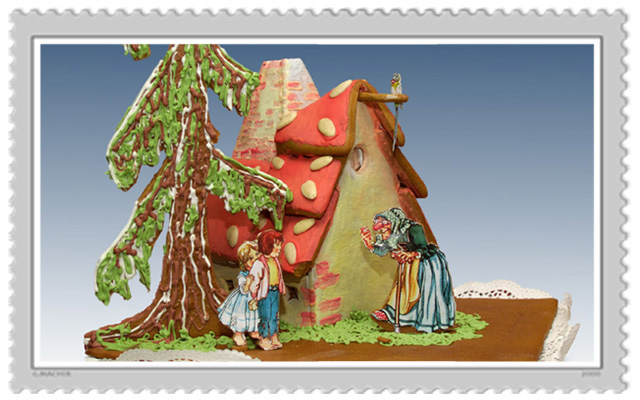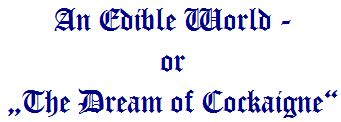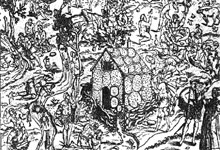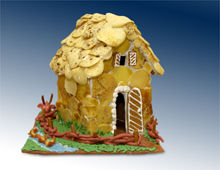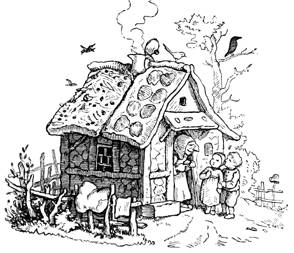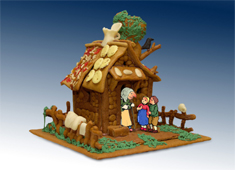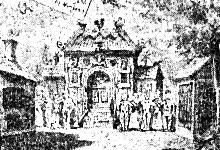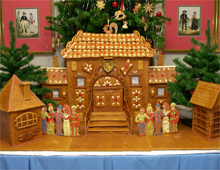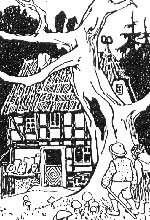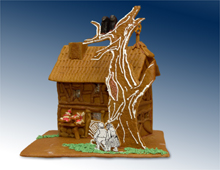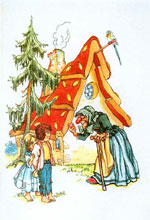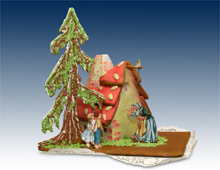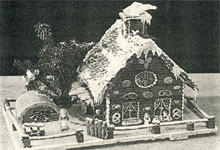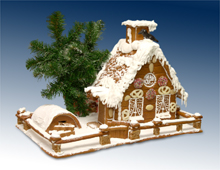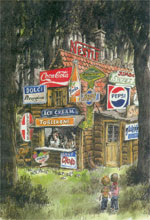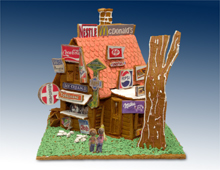|
|
|
|
The first known dream of developing edible gingerbread houses was certainly the vision of The tale of Cockaigne is widely spread all over Europe. Already as early as in the 5th century b.C. a Greek poet named Kratinos wrote a “report” about a friendly country of the future, where “cakes will be used to exercise throwing games” and “buns for marble games”. Edible houses, roofs, fences or doors will be items of everyday life in Cockaigne and “doors and windows made of sugar and frames of these of gingerbread cake”. Around 1800 the social utopia of Cockaigne was turned into a fairy tale for children. This is where it became sweet. An example: the dream journey of little Marie Stahlbaum in E.T.A. Hoffmann’s Christmas tale “The Nutcracker and the Mouse King” of 1816. The entrance to Candyland behind a meadow of rock sugar consisted of caked raisins and sugar-almonds. On the other side there was “Gingerbread Homestead”. With little imagination everybody could fancy what it looked like. There is no doubt that our gingerbread houses have their archetypes in the edible houses of Cockaigne. The siblings in the fairy tale of “Hansel and Gretel” were apparently not the first to appease their hunger by eating from a gingerbread house. The famous Nuremberg poet Hans Sachs, already in 1530, was dreaming of Cockaigne, “three miles behind Christmas” with houses “covered with pancakes, doors and windows made of gingerbread, floors and walls from bacon cakes”. It was not forbidden to eat from these little houses. The poet did not change this part of the tale. The only difference was that in Cockaigne the nibbled pieces As far as nibbling from theses sweet utopia houses is concerned, the desire is still vivid in today’s illusions and imaginations ‑ at least at Christmas. Romantic and fanciful little gingerbread houses tend to sweeten reality. The more these houses are decorated with sugar frosting and candies, the more these houses are surrounded by an idyllic landscape with sugar-white fur trees, the better. This is the goal of our gingerbread houses arts exhibition at the Abbey of Zwettl: to create the right frame of mind for the season’s feast and to make visible the historic tradition of this baking and decorating art. This is our way of giving life to a new vivid and sensorial impression of the object “gingerbread house” by telling the story of its development and at the same time by letting the visitor experience the original houses (for the first time in the gingerbread arts exhibition of 1994 in the Imperial Summer Castle of Luberegg on the river Danube). Prove to yourself how far we were able to accomplish the translation from the history of gingerbread houses to the real edible pieces of art in the exhibition. |
|
|
The original: If
you want to find out more about the model click on the “old picture” |
What we made of it: To see more details click into the photograph of the “new house” |
 |
|


